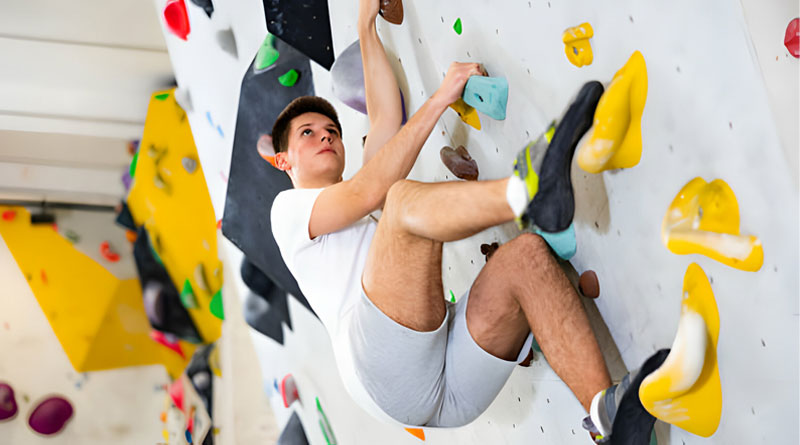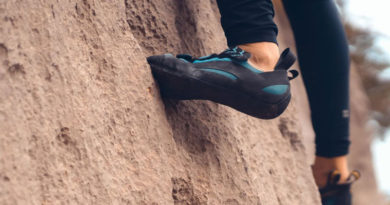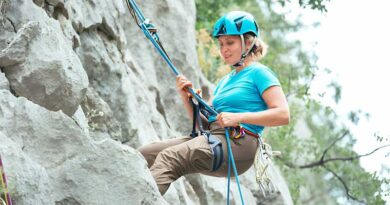Can You Climb Without a Harness?
Rock climbing, an exhilarating sport that tests physical strength, mental focus, and problem-solving skills, has gained popularity worldwide. Whether indoors at a climbing gym or outdoors on natural rock formations, climbers typically rely on safety equipment like harnesses, ropes, and anchors to mitigate risks. However, some daring individuals choose to climb without harnesses, relying solely on their skills and instincts. This article delves into the world of harness-free climbing, exploring its challenges, risks, and the debate surrounding its practice.
Understanding Harness-Free Climbing
Harness-free climbing, also known as free soloing or deep-water soloing, involves ascending rock faces without the use of safety equipment. Free soloists rely solely on their climbing abilities, balance, and mental focus to navigate the terrain and reach the summit. Deep-water soloing, a variation of free soloing, takes place over water, providing a safer alternative in case of a fall. Both forms require exceptional skill, experience, and confidence.
The Appeal of Harness-Free Climbing
For many climbers, the allure of free soloing lies in the purity of the experience. Without the encumbrance of gear, climbers feel a direct connection to the rock, relying solely on their physical and mental abilities. The intense focus required during a free solo ascent can provide a profound sense of concentration and freedom, making each climb a deeply personal and rewarding endeavor.
Challenges and Risks
Despite its appeal, harness-free climbing presents significant challenges and risks. The absence of safety equipment means that any mistake or slip could result in a fall with potentially catastrophic consequences. Even the most skilled climbers face the inherent dangers of exposure to high heights and unpredictable rock conditions. Additionally, environmental factors such as weather and rock stability can further increase the risk level.
Mental Preparation and Focus
Successful free soloists emphasize the critical role of mental preparation and focus. Before attempting a climb, climbers meticulously study the route, visualize each move, and assess their physical and mental readiness. Maintaining unwavering concentration throughout the ascent is essential, as even a momentary lapse in focus can have dire consequences. Many climbers employ techniques such as meditation and deep breathing to stay calm and focused under pressure.
Skill and Experience
Harness-free climbing requires a high level of technical skill and experience. Climbers must possess advanced rock climbing abilities, including proficiency in various techniques such as edging, smearing, and crack climbing. Moreover, experience plays a crucial role in assessing risk factors, understanding rock formations, and making split-second decisions during the climb. Novice climbers are strongly advised to gain extensive experience and mentorship before attempting free soloing.
The Debate
The practice of harness-free climbing sparks a heated debate within the climbing community and beyond. Critics argue that free soloing is unnecessarily reckless and irresponsible, putting the climber’s life at undue risk. They advocate for the use of safety equipment as essential for mitigating potential hazards and ensuring climbers’ safety. Proponents, however, defend free soloing as a legitimate form of self-expression and personal challenge, highlighting the individual’s right to assess and accept risk on their own terms.
Safety Considerations
While free soloing inherently carries higher risks, climbers can take measures to enhance safety to some extent. Choosing routes well within one’s skill level, thoroughly inspecting the rock for stability, and maintaining physical fitness are crucial precautions. Additionally, climbers can inform trusted individuals of their plans and whereabouts, ensuring that help can be summoned in case of an emergency. However, it’s essential to acknowledge that no amount of preparation can eliminate all risks associated with harness-free climbing.
Conclusion
Harness-free climbing represents the pinnacle of individual challenge and achievement in the world of rock climbing. While it offers a unique and exhilarating experience for those with the necessary skills and mindset, it also comes with significant risks that cannot be ignored. Whether viewed as a daring pursuit of personal limits or a reckless gamble with life, the debate surrounding free soloing underscores the complex relationship between risk, reward, and personal freedom in the world of adventure sports. Ultimately, the decision to climb without a harness rests with the individual, who must carefully weigh the potential consequences against the thrill of the climb.




